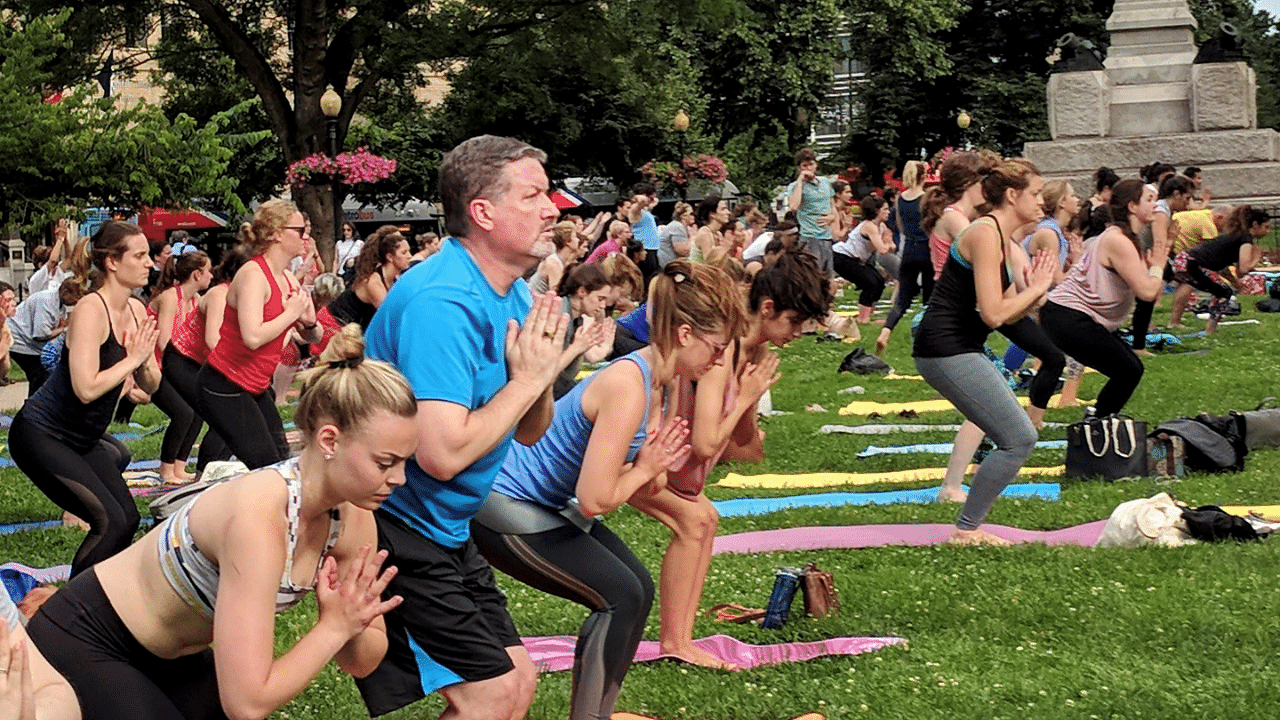
Would you be offended if an American wore a saree to the Oscars? Or if yoga became the UK’s preferred fitness regimen? Well, if you are a part of the bandwagon that brandishes two words – cultural appropriation (CA) – every time a foreigner borrows from Indian culture, take a deep breath and think of… Gobi ‘Manchuri’, Dosa Pizza, churidar tights and, yes, Anu Malik.
When Prime Minister Narendra Modi sold the idea of an International Yoga Day to the UN, it was considered an example of India’s soft power, a bit of muscle-flexing on the international stage. So, what are we wailing about now? And what’s with this “calling out” business every 30 seconds? The CA cops have lashed out at Gucci for selling an Indian-inspired kaftan, Kim Kardashian for a maang tikka headpiece, Selena Gomez for wearing a bindi, Kendall Jenner for sporting a nose ring…the list, really, is quite long.
Is CA – the adoption of elements by one culture from another -- a bad thing? Well, it depends on the context, whether one is stealing from a culture or adding to it. In a riveting essay titled, The Ethics of Cultural Appropriation, in the Dalhousie Review (2000), James O Young identifies several types of CA. The most obvious is material appropriation, when someone from a dominant culture makes off with some object/material from a subordinate culture. Our Kohinoor sitting prettily in London comes to mind. Is this bad? Of course, it’s bad, and we still want it back. But what about that tourist who buys a Warli art painting and takes it home? Well, he paid for it, and it usually is a fair bargain for both sides. Now, what if the tourist imitates the art and makes different versions of it? This is where it starts getting complicated.
Much of the CA that is in the news today has to do with non-material reproductions. The appropriation could be in stylistic terms, like the White American artiste Eminem using rap music that is traditionally associated with Black artistes. It could be a motif like the paisley pattern, or even an idea or an element. Music composer A R Rahman, for instance, freely amalgamates elements from different traditions – Carnatic, Western, Hindustani and Qawwali – to create his unique music.
Such amalgamation, or appropriation, is a double edge-sword. When Paul Simon of the Simon-Garfunkel duo used the music of South Africa's townships to create the album Graceland in the 1980s, it opened up the world for South African musicians, helping the original move into the mainstream. This happened because Simon duly acknowledged his sources and his inspiration. And paid them handsomely for their efforts.
CA, unfortunately, may not always have a happy ending. Sometimes, it can be downright disrespectful, as it was in the case of Goddess Lakshmi depicted on skimpy swimsuits from Byron Bay label Lisa Blue. It can be criminal when it robs people of their livelihoods and leads to a community, especially a marginalised one, losing its individuality and becoming part of the cultural melting pot.
This is what Galarrwuy Yunupingu, a leader in the Aboriginal Australian community, was speaking about when he wrote in The Black/White Conflict: “Every week, we find that other non-Aboriginal people are stealing our designs and paintings for decorating T-shirts, dress fabrics, restaurant menus and so on. They are using the same old tactics of assimilation, except this time, they are trying to assimilate our culture into their world because it is fashionable in their eyes and will make money.”
A similar argument surfaced recently when Mexico’s Ministry of Culture pulled up fashion labels Zara, Anthropologie and Patowl for using patterns from indigenous Mexican groups without giving back to the creative communities. While copyright laws protect individual rights, they rarely protect traditional forms of art and culture. And this is what big labels should be mindful about. It’s important to acknowledge where the inspiration is coming from and to make life better for these often-struggling communities. As Paul Simon did.
If the deplorable kind of CA described above is not set right, it could lead to “a sort of cultural apartheid, where each artist is confined to an aesthetic homeland,” says James Young.
There would be no cultural exchange among nations, no intertextuality in literature, no fusion in music, no assimilation in art and fashion, no 'Gobi Manchuri'. And that would be a very sad world indeed.
(The writer teaches journalism at Mount Carmel College)